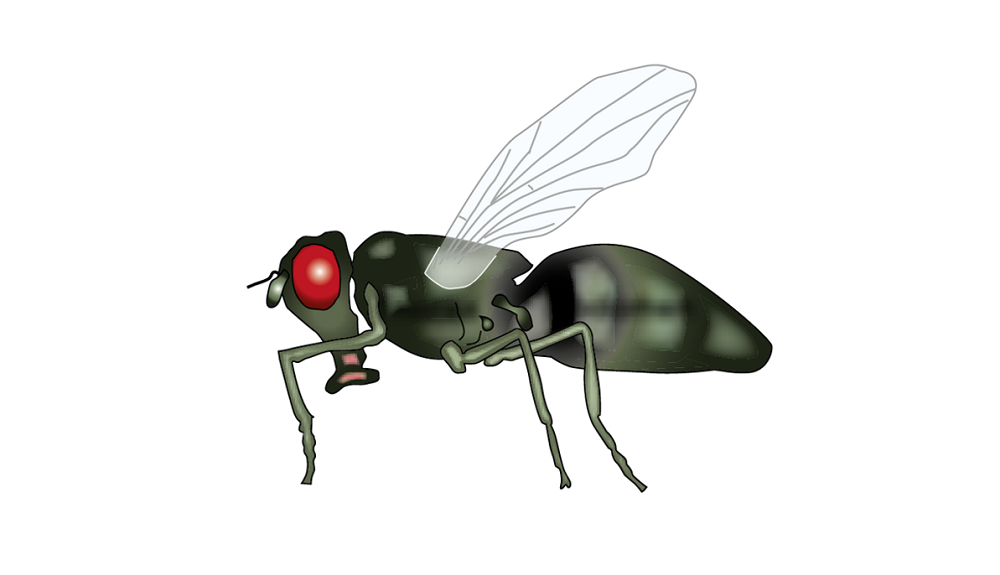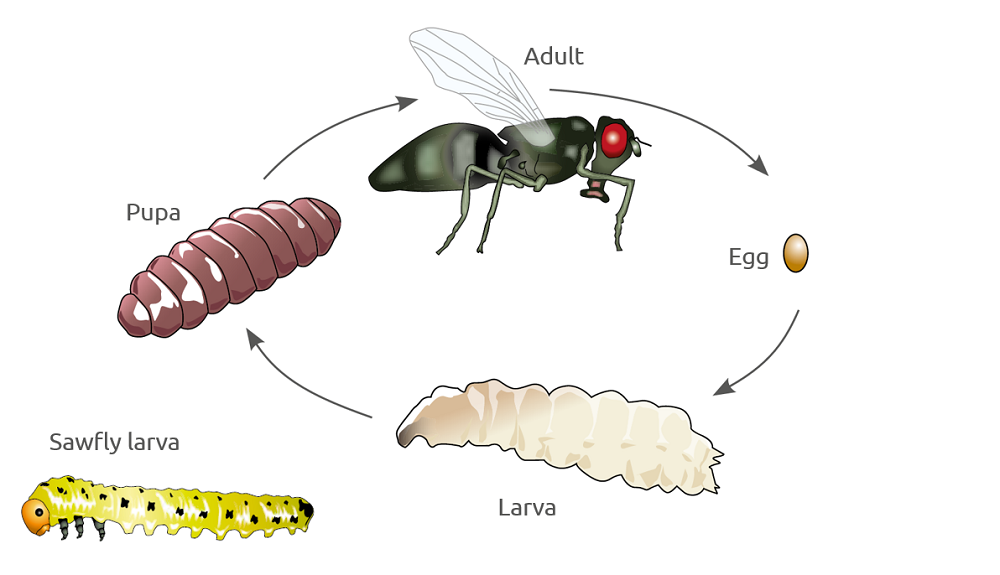- Home
- Knowledge library
- Identification and management of flies and sawflies in field crops
Identification and management of flies and sawflies in field crops
Flies (Diptera) are the most numerous insects found on farmland. Some are crop pests, but many perform important functions – including pest control, pollination, organic matter recycling and a food source for farmland birds. Although not true flies, sawflies (Hymenoptera: Symphyta), due to their visual similarities, are also outlined on these pages.
 AHDB
AHDB
General life cycle and defining features
There are four stages to the fly life cycle – egg, larva (mostly legless maggots), pupa and adult (with a single pair of wings). Sawflies are related to bees, wasps and ants. Although the adults look similar to wasps, they are distinguished by a broad connection between the abdomen and thorax (unlike the ‘wasp waist’ of other hymenopteran species). The larvae are also caterpillar-like, with six or more pairs of prolegs on the abdomen. True caterpillars have five pairs or fewer, with the first two abdominal segments legless. Sawfly larvae also have a smooth head capsule with distinct, small black eyes.
 AHDB
AHDB
Flies and sawflies (pest species)
How to encourage natural enemies of field crop pests
The Diptera is a very diverse order, with just over 7,000 species. Although numerous predatory species are common on farmland, relatively little is known about their ecology and contribution to pest control, except for the hoverflies. Likewise, many species may pollinate flowers, but their overall importance for pollination is poorly understood. They also contribute to nutrient recycling of dung and vegetation. Some adult sawflies are carnivorous.
 Jon Oakley.JPG) Jon Oakley
Jon Oakley


 University of Warwick.JPG?v=637780261980000000)
 Rothamsted Research.JPG?v=637780262000000000)
 Dewar Crop Protection.JPG?v=637780262030000000)
 ADAS.JPG?v=637780262060000000)
 University of Warwick.JPG?v=637780262100000000)

 Bayer CropScience.JPG?v=637780262130000000)
 ADAS.JPG?v=637780262150000000)
 (c) Jon Oakley.JPG?v=637780262190000000)
 University of Warwick.JPG?v=637780262210000000)
 Jon Oakley.JPG?v=637780262230000000)
 PGRO.JPG?v=637780262270000000)
 ADAS.JPG?v=637780262300000000)

 Dewar Crop Protection.JPG?v=637780262330000000)

 ADAS.JPG?v=637780262400000000)